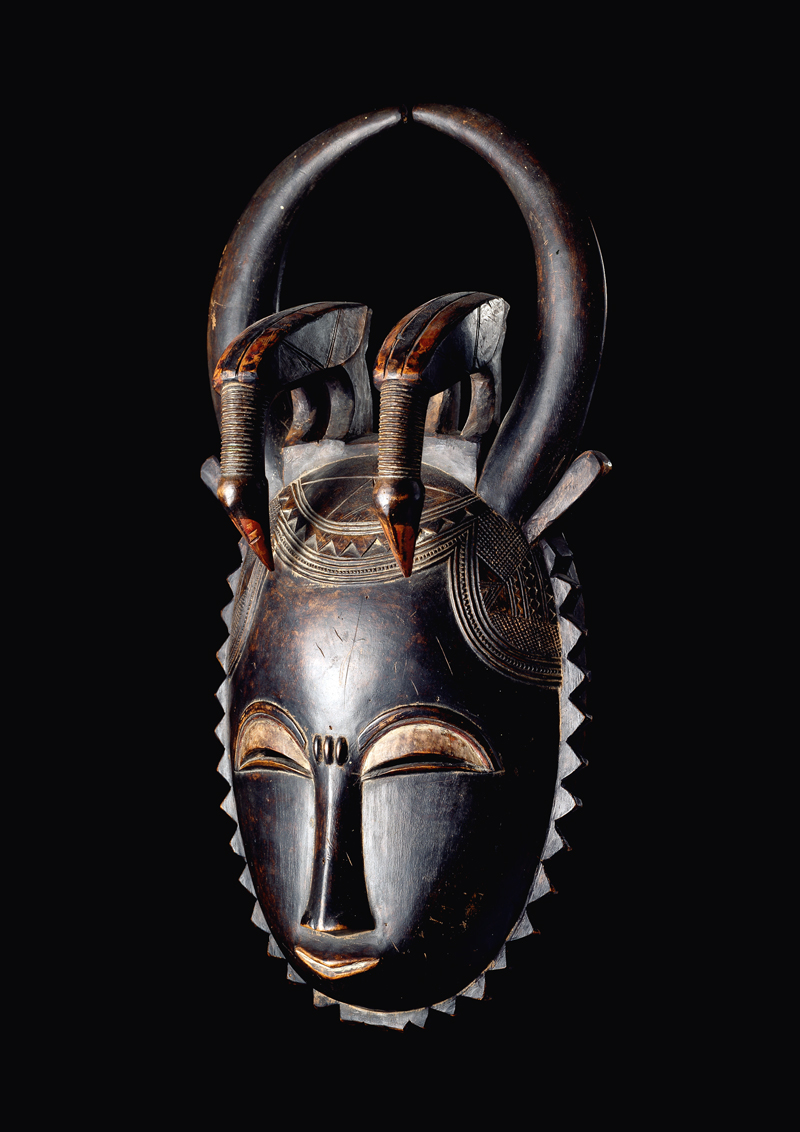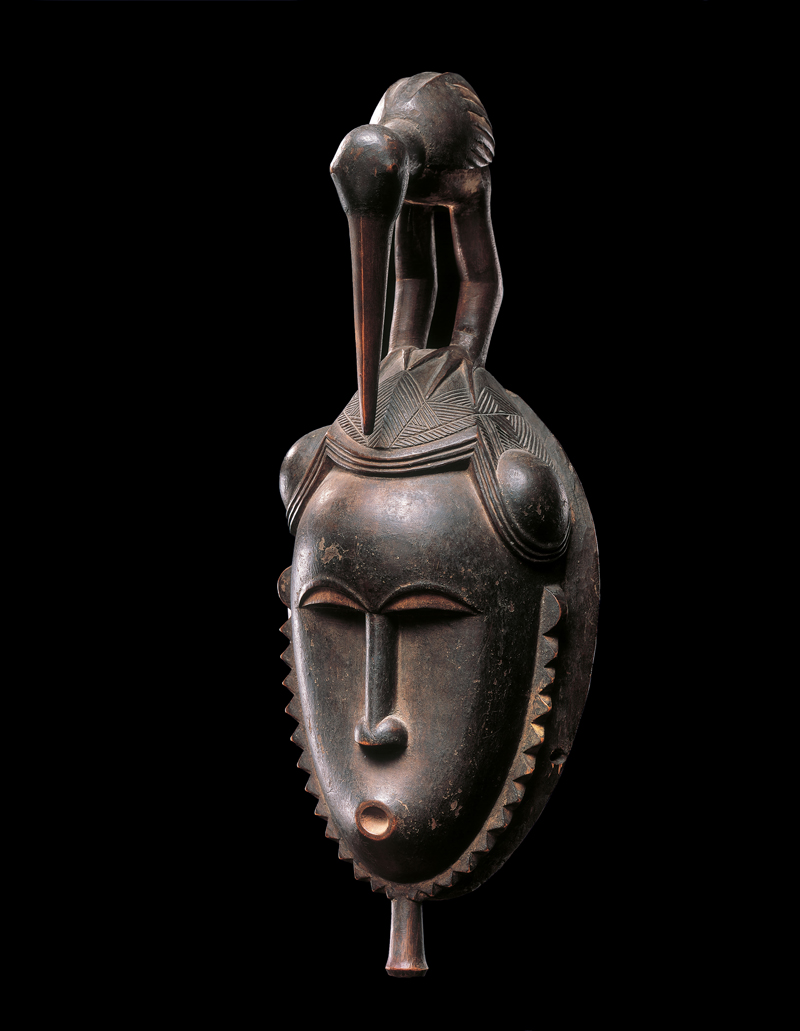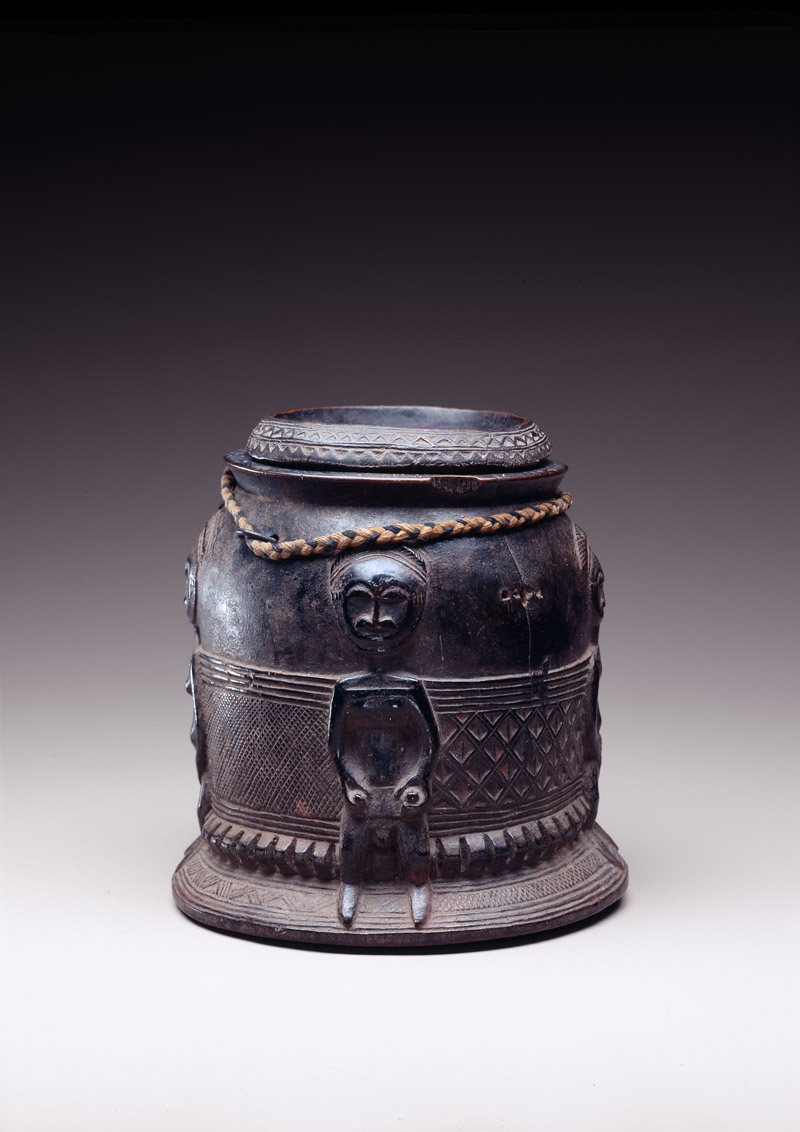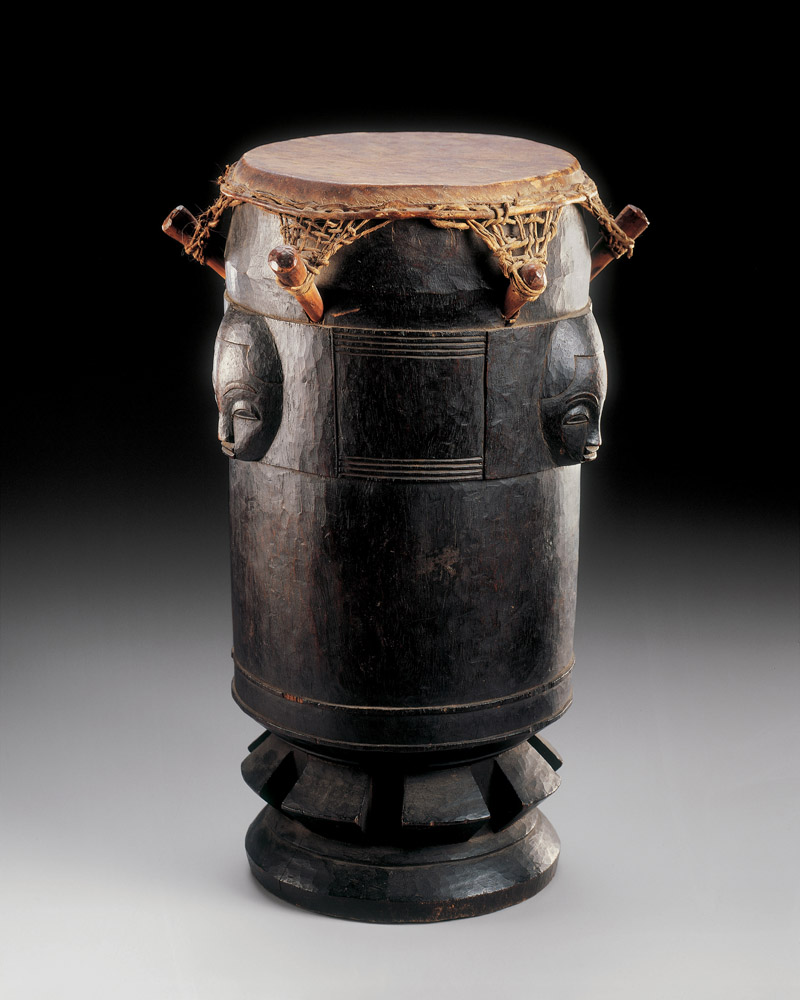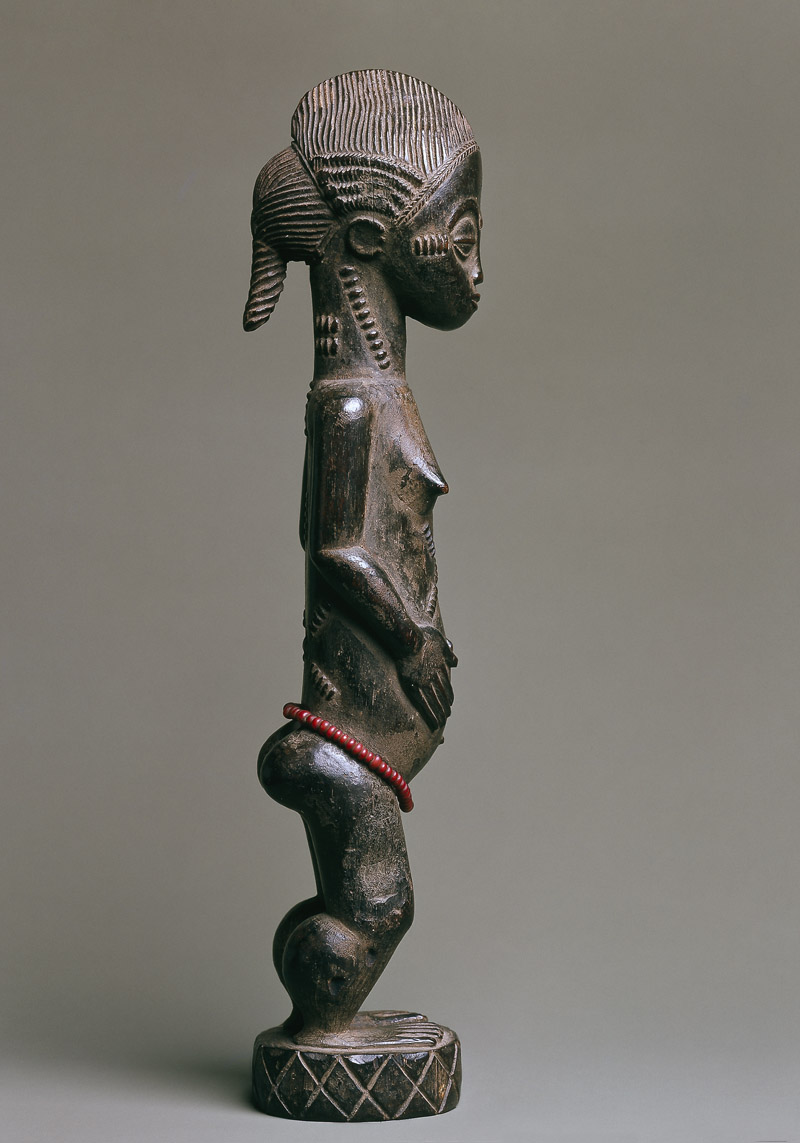In the heart of Côte d’Ivoire, at the junction between the wooded savanna and the forest, live the Yaure, surrounded by more numerous and better known peoples (the Guro, the Baule), in whose shadow they have long survived, and farther away, by the Senufo, the Dan, the Dida and the lagoon peoples. Though the masks and statuettes produced by the Yaure enchanted European artists and collectors from the early twentieth century on, it is only very recently that the Yaure people and culture have been the subject of an anthropological work. Professor Alain-Michel Boyer, who has studied the Yaure since 1970, is now publishing the results of his research on the occasion of this exhibition.
The book appears under the auspices of the Fondation Culturelle Musée Barbier-Mueller, whose mission is to preserve in writing the memory of cultures threatened with extinction.
The Yaure have produced remarkable masks and statuettes. Whether face masks comparable to portraits or outstanding for their extreme refinement, or helmet masks depicting stylized buffalo heads, these pieces call to mind the masked dances, fundamental rituals often associated with death. For the Yaure, the masks are so sacred, and therefore so dangerous, that they cannot be seen by women, at the risk of causing infertility or even death.
Yaure statuettes can be divided into two types. The first welcome the nature spirits that bestow on healers the gift of clairvoyance. The second are meant for the husband or wife from the world beyond, a mystic spouse everyone had in a previous life. Various problems (infertility, infidelity, impotence) are attributed to the jealousy of that abandoned partner. That carved statue, by virtue of its exquisite beauty, is supposed to charm the spouse for whom it is made but also the person who manipulates it.
The drums, seats and other Yaure artefacts exhibited here attest to the same concern for aesthetic beauty that emanates from everything they produce.

